How to catch Crawfish – What they are and how to cook them
Crawfish or Crayfish what are they
Do you love chowing down on these tasty little relatives of lobster? They are best when caught from the lake fresh and boiled right away. If you love, eating them then read on to learn more about what they are, how to catch crawfish, and how to cook them.
Crawfish are called by several names to include crayfish, mudbugs, freshwater lobsters, and mudbugs to name a few. They are a member of the crustacean family and resemble small lobsters. They have two large claws and eight legs along with a flexible tail they frequently use to shoot backwards through the water and escape. They can be found in nearly every form of fresh water, especially in creeks, streams, and lakes of the southern US. With the best times seeming to be April, May and October though they are available from late March through early November in most southern states.
While it is often said that Crawfish have a distinct taste, it is described as less tough and more subtle than shrimp. The tail meat flavor tends to be sweet with a little salt and mineral taste and the meat from the claws tend to be sweet and light.
The first method of how to catch a crawfish
Now that we have discussed what they are and how they taste, let us move onto how to catch them. This method is probably most familiar to you if you grew up playing in streams and creeks. It is also the way would be most likely for you to catch them if you suddenly found yourself needing to survive and having no supplies in the wilderness.
You wade into the creek or stream in an area that is shallow and has numerous rocks. Crawfish tend to hide under the edges of the rocks and this is an ideal place to find them. Select a rock which has a decent size but you can easily lift. Then position yourself just downstream of the rock. Once in place gently lift the rock up so that you do not startle the crawfish or disturb the mud sediment and cloudy the water. At this time, it is likely you will see a crawfish where the rock was. Set your rock to the side and prepare to catch the crawfish.
It is important to note that crawfish normally flee backwards back flapping their powerful tail causing them to shoot through the water. Reach down with one hand and prepare to pinch it just behind the head and main claws. With your other hand, be prepared to move in from behind it if it darts backwards. The claws while large on most freshwater crawfish are not of sufficient size to cause injury. Once you have grasped it, lift it from the water, and place it into a bucket, net or bag.
The second method requires a rake
This is by far in my opinion one of the easier and faster ways to catch crawfish. However, it generally yields smaller crawfish, which I find ideal to use as fish bait. Occasionally you will get larger ones but not as frequently as the other methods. This works best during the rainy season when the roadside ditches are full of water but can also be done in very shallow streams with many fallen leaves.
Take a bow rake, the kind with 14 or so hard non-flexible teeth and stand on the shore to the side of your ditch or stream. Lean as far out over the waterway as you can and sink the rake teeth down into the water and leaves on the bottom. Then pull the leaves, water and crawfish up onto the shore at your feet. You should see them crawling around in the leave debris at this time. Quickly pick up the ones you want and store them in a bucket with a small amount of water and then push the smaller ones and leaves back into the water source so they can continue to grow for another day.
If using this method I am usually collecting them to go fishing and I prefer to select the ones that are about an inch to inch and a half long as I have found them to be the best size for bass.
The third method on how to catch crawfish
This method involves a bit more work and patience; however, it has the potential to yield some of the largest crawfish. I have had the best luck using this on larger creeks that are three or more feet deep in heavily wooded areas. Take a strip of meat dead fish and tie it to a fishing line. Toss that in about three feet from the bank and let it sink to the bottom. Wait for about five minutes or so and then very slowly pull it up. Frequently there will be several crawfish hanging from the meat while they feed. In most cases they will not, release even once pulled from the water. Then you can pluck them off.
Bacon strips works well for this, though frequently I have eaten all the bacon for breakfast. The crawfish caught this way tend to be a bit larger than the ones caught in the first two manners probably because the bigger ones chase the smaller crawfish off when feeding, or perhaps because their stronger and better able to hang onto the food source. Either way these are generally the perfect size for eating and it should not take you long to catch enough for yourself.
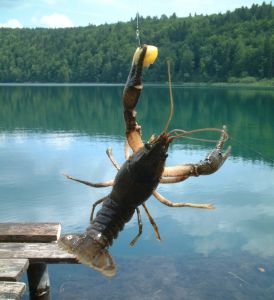
The forth and best way I have on how to catch crawfish
This is the easiest and best way to catch large amounts of crawfish. You will want to purchase, find, or make a crawfish trap or basket. This is essentially a basket of small wire mesh with several holes in the side. These holes are normally half way up the sides of the basket and protrude inside about three inches. Some bait, commonly meat, dead fish, or fish heads is hung inside of the basket in order to lure the crawfish in. A rope is then tied to the basket and it is tossed into a creek, stream, or lake bed and left there for several hours or overnight.
How it Works
Due to the design of the basket, the water flows through the basket releasing the scent of the bait. The crawfish then are able to crawl up the outside of the basket due to the wire mesh. Once they find the holes, they crawl into the tubes, which protrude into the basket. They then float over to where the bait is and begin to eat. However, they are unable to get back out.
This is due largely to the way in which they swim and the design of the trap. Because the tubes protrude several inches from the wall they are not able to simply crawl back out, they also cannot swim out as they normally swim backwards. When you return the following day, you can use your rope to pull the basket up and if there are any crawfish present in the waterway, you should find several in your basket. It is not uncommon to locate a dozen or more in a well-designed and baited trap.
Using the Baskets
You can deploy several of these traps along a single waterway spaced every hundred or so feet and make quick work of harvesting a decent amount of them. It is important to consult your local fishing regulations and make sure your crawfish trap meets any requirements they have.
For instance, in Georgia, you cannot use minnow nets in streams and creeks and fish baskets have to meet certain specifications. At the same time, there is no regulation on craw fishing. This is why it is important to make sure that your trap is designed especially for crawfish, this can be done by purchasing one specifically made for that or using a design that is obviously intended for craw-fishing.
Now that we have caught our crawfish what do we do with them?
Outside of being used for bait, the primary use as stated is for food. In order to store them and keep them alive I prefer to use a large cooler with a damp towel and ice pack in it. This will keep moisture present for them, as well as keep them cool. In this manner, you can generally keep them alive for a day or so. It is best if they are cooked while they are still alive though as the meat will spoil rapidly.
In order to cook them you will want to wash them first. This is accomplished by placing them in a bucket of clean water for about ten minutes; repeat this process several times until the water remains clear. Some people feel that you need to place salt in the water while doing this, as it will make them purge their bowels. I have eaten them both ways and not noticed a difference in the taste. During the washing process remove any dead crawfish you locate.
Once you are done washing them they are ready to be cooked. Most commonly, this involves cooking them in a crawfish boil. I prefer to use this King Kooker Turkey Fryer for this due to its 30 quart capacity, it allows me to cook enough for the whole family at once. This 30 quart pot and strainer basket from Amazon is a more affordable option if you already have a burner set up.
A low country boil frequently involves a seasoning such as Zatarain’s or Old Bay. Bring your water to a boil add the seasoning. When the water reaches a rolling boil add potatoes and shucked corn, boil this mixture for about ten minutes. At that time, you add the crawfish and boil for another five minutes.
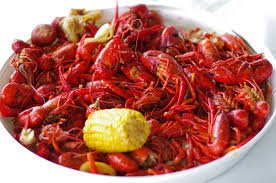
Remove from the heat and allow the crawfish to sit in the liquid for at least ten more minutes to soak up the flavor. The juice is then drained off and the entire pot dumped onto a large platter for everyone to enjoy. You can expect to get about one pound of meat for every seven pounds of crawfish.
In Conclusion
So now that we have discussed what they are, what they taste like, how to catch crawfish and how to cook them are you ready to give them a try? Let us know your thoughts below.
Check out my other articles on Getting started with Hydroponics and come up with a Prepper Food List. Also check back later for an article on how to store crawfish meat later and make a tasty Cajun Jambalaya with them.
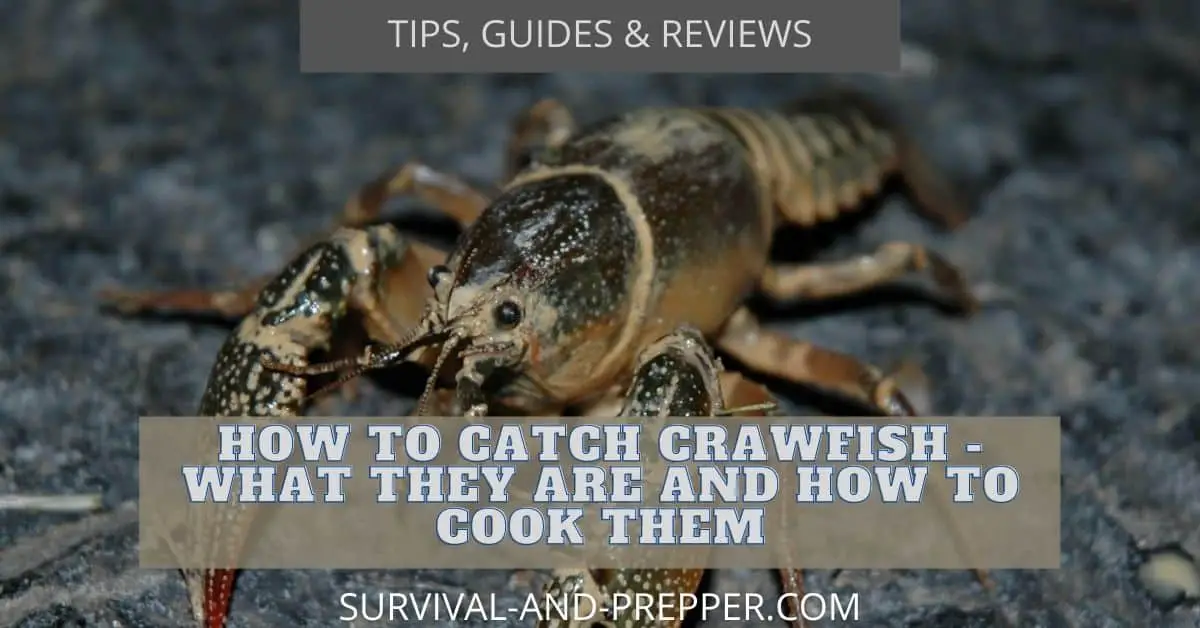

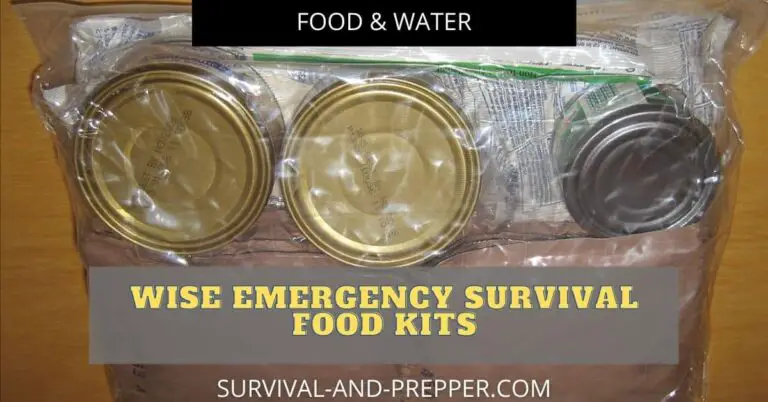
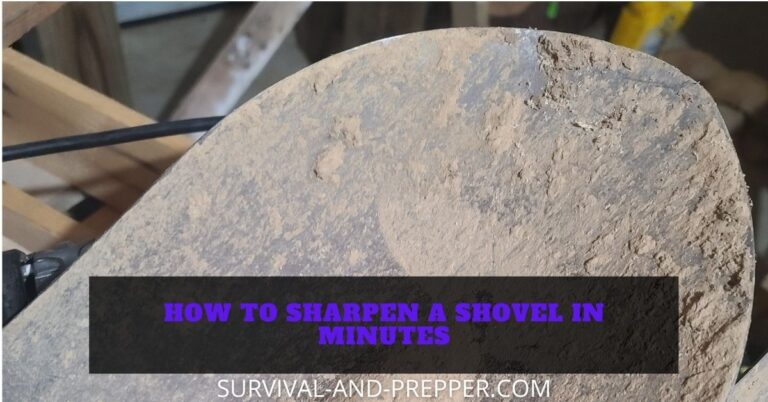
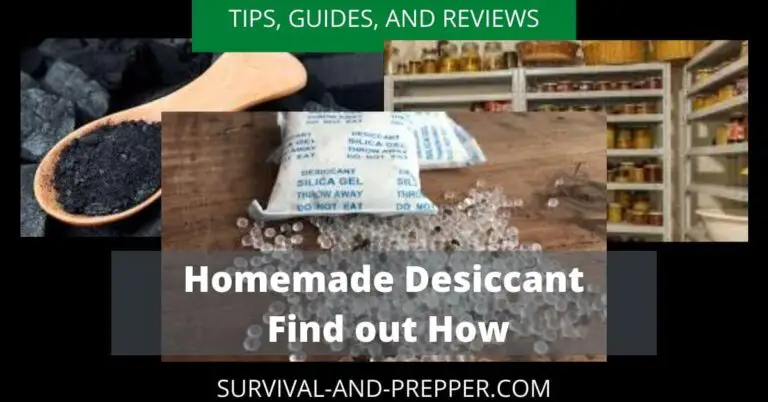


Hey. I love the website and the instagram. I would love to see more videos on survival or maybe even a whole video tab for the website. Thanks.
Thanks for the comment. That is an interesting idea. I don’t have many videos yet myself just yet. However, I will look into it as it would be beneficial to have links to videos etc. I will see about reaching out to some others and checking to see if I can use their videos.